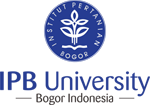ANALISIS PERUBAHAN PENGGUNAAN LAHAN RUANG TERBUKA HIJAU DI JAKARTA TIMUR
Abstract
City development in Indonesia, especially in East Jakarta has affected the changing of land use. The increasing of physical building at the city has positively affected to the increasing economic activities. Besides, it has caused environmental degradation. One form of environmental degradation is decreasing of green open space which is turning into built-up area. This research aims: to identify the pattern of green open space change, to know the population growth’s rate and regional development in East Jakar-ta, and to assess factors affecting the green open space change. The result showed that in 2002, the green open space in East Jakarta was 830,6 ha and in 2007 it increased into 1.056,7 ha. Between the period of 2002 and 2007 there was an increasing about 226,1 ha. Population growth’s rate from 2002 until 2008 in East Jakarta was 0.9% per year, and inmigrant growth’s rate in the same period was 0.7% per year. The re-gional development was showed by the appearance of developed facilities including education, health and economic facilities. Growth rate of education, health and eco-nomic facilities in the period of 2003 and 2006 are -1.5%, 6.4% and 1.1 per year, re-spectively. Based on scalogram analysis, most of the kelurahan (town villages) in East Jakarta are belong to hierarchy III. In 2003, there were 40 kelurahan classified as hier-arcy III, 18 kelurahan as hierarchy II, and 7 kelurahan as hierarchy I. In 2006, the number of kelurahan grouped as hierarchy III decreased into 35 kelurahan, while at hierarchy II and I increased into 19 and 11 kelurahan, respectively. The most affecting factors (p-level ≤ 0.05) to the green open space change are availability of unoccupied area. Meanwhile, the potential affecting factor (p-level ≤ 0.1) to the green open space change is the increasing number of health facilities.Keywords: Area Development, Availability of Empty Area, Citizen Growth, Green Open Space
Downloads
This journal permits and encourages authors to post items submitted to the journal on personal websites or institutional repositories both prior to and after publication, while providing bibliographic details that credit, if applicable, its publication in this journal. However, after the article is submitted and published in this journal, it is fully copyrighted by the Jurnal Lanskap Indonesia or JLI. If excerpts from other copyrighted works are included, the author must obtain written permission from the copyright owner and give credit to the source in the article. Then, the writer or reader is allowed to copy, share, and redistribute articles/material in any form. But it must still include the appropriate source and credit because the article in this journal is licensed by Creative Commons Attribution 4.0 International License (CC BY 4.0).
I. Proposed Policy for Journals That Offer Open Access
Authors who publish with this journal agree to the following terms:
- Authors retain copyright and grant the journal right of first publication with the work simultaneously licensed under a Creative Commons Attribution License that allows others to share the work with an acknowledgement of the work's authorship and initial publication in this journal.
- Authors are able to enter into separate, additional contractual arrangements for the non-exclusive distribution of the journal's published version of the work (e.g., post it to an institutional repository or publish it in a book), with an acknowledgement of its initial publication in this journal.
- Authors are permitted and encouraged to post their work online (e.g., in institutional repositories or on their website) prior to and during the submission process, as it can lead to productive exchanges, as well as earlier and greater citation of published work (See The Effect of Open Access).
II. Proposed Policy for Journals That Offer Delayed Open Access
Authors who publish with this journal agree to the following terms:
- Authors retain copyright and grant the journal right of first publication, with the work after publication simultaneously licensed under a Creative Commons Attribution License that allows others to share the work with an acknowledgement of the work's authorship and initial publication in this journal.
- Authors are able to enter into separate, additional contractual arrangements for the non-exclusive distribution of the journal's published version of the work (e.g., post it to an institutional repository or publish it in a book), with an acknowledgement of its initial publication in this journal.
- Authors are permitted and encouraged to post their work online (e.g., in institutional repositories or on their website) prior to and during the submission process, as it can lead to productive exchanges, as well as earlier and greater citation of published work (See The Effect of Open Access).



























